originally posted at https://canmom.tumblr.com/post/663134...
Good Thursday my friends! Apologies for the lack of Toku Tuesday this week, for various reasons I had to clean most of the carpets in my house with a carpet shampoo machine and that took basically all of my time. But no more on that.
This week, I want to shine a spotlight on a studio whose work we’ve seen a couple of times on Animation Night, most notably when we watched their miniseries Pokémon: Twilight Wings, but they’re also the animators of Takashi Nakamura’s short Bubu & Bubulina in the Japan Animator Expo. More recently, they’ve become known for summer films like Penguin Highway…
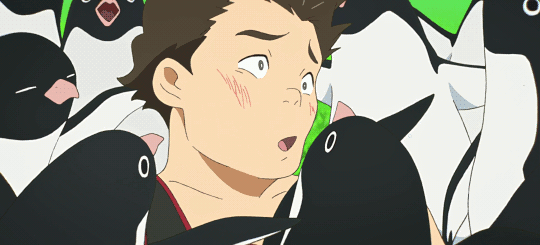
Of course, as the saying goes, a studio is just a building: many of the animators who made Twilight Wings shine like Weilin Zhang and Bahi JD are freelancers who do not regularly work at Colorido. Nevertheless, there are a consistent set of people who give them their distinctive style - and since they made one of the better received shorts in the recent anthology Star Wars: Visions, let’s take a look in while we wait for someone to replace the dubtitles on that with a proper fansub!
My major source for this is - guess who? - kVin of Sakuga Blog, who wrote a detailed retrospective on the studio back in 2018. Founded in 2011 by Hideo Uda, a businessman with relatively little experience in anime, the motivation behind the studio was not so much artistic as practical:
(…) creating that initial blank slate was by all means a deliberate move; though he had no ideas to uphold on a creative level, Uda did have a goal: to establish a studio where artists could work comfortably, shielded from the abysmal working conditions and complicated financial situations that plague anime as a whole. He’d be the pragmatic core of the company, lessening the burden of the creatives and allowing them to become the studio’s leading voices as much as possible. By doing that, the studio would ideally develop a creative ethos along the way. And that it did!
As portrayed in the video above (ty again kVin), this is an all-digital studio; not a rarity these days by they were ahead of the curve. In the early years, they brought in Takashi Nakamura, an animation director on Akira and the director of the wonderful Chicken Man and Red Neck short on Robot Carnival.
kVin praises Nakamura as an inspiration to some of our favourite animators like Koji Morimoto (who you may remember as one of the most creative directors in all the 4°C anthologies, and also in 80s works like the Franken’s Gears segment of Robot Carnival) and Hiroyuki Okiura (long list of credits as a key animator, including Akira and the Magnetic Rose segment of Memories; as a director, he’s probably best known for taking on Oshii’s live-action Kerberos franchise in Jin-Roh: The Wolf Brigade about scary cops in a fascist future Japan, which we haven’t shown on Animation Night but tends to get a lot of praise.)
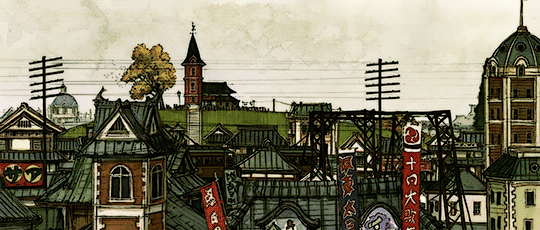
By 2011, Nakamura had also moved to directing, and Colorido offered him a chance to realise some unfinished ambitions…
And while as a director he didn’t make quite as much of a splash as he did as an animator, hence his relative obscurity among the fandom, Nakamura’s works are still rightfully held in high regard by those who’ve gotten a chance to experience them (especially A Tree of Palme, an official selection at the Berlinale back in 2002). As a storyteller he proved to have a ludicrous range, seemingly capable of tackling all sorts of genres and tones. But some things remained consistent: the rock-solid fundamentals he gained as an animator, a dignified air that was maintained even during the sillier or most tragic moments… and profound unmarketability, which is why the project he had in mind at the time got scrapped by the studio that was supposed to produce it. Promising him an opportunity to actually bring it to life, Nakamura hopped onto studio Colorido to share their very first adventure.
This resulted in two short films with Colorido: the sweeping historical cross-section Shashinkan, and of course Bubu & Bubulina featuring a pair of sisters dancing through a colouful collage realm reminiscent of Inu Curry, before he amicably parted ways to let younger animators more familiar with digital tools have their turn. (He would go on to direct Harmony (2015) at 4°C with Michael Arias of Tekkonkinkreet fame.)
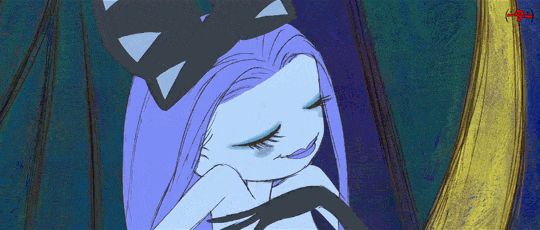
So, the identity of the studio would end up following most from their other major figure, Hiroyasu Ishida aka Tete. We can trace him back to 2009 when, as a student, he’d delighted everyone with an impeccably timed short film about a girl careening down a hill, Fumiko’s Confession:
and his melancholy graduation film rain town showing a girl meeting a decaying robot in a waterlogged city:
Both films show an exceptional talent for both storyboarding (check out those shot angles and compositions I mean come on wow) and character animation. At Colorido, he invited his friend Yojiro Arai, a young designer and background artist who had managed to achieve his dream of working at Ghibli; yet he was rather overwhelmed by the workload and when Ishida contacted him on Pixiv, he decided to take the risk of going to a new studio.
Their first work together at Colorido was another short film, titled Hinata no Aoshigure, released in 2013 alongside Shashinkan...
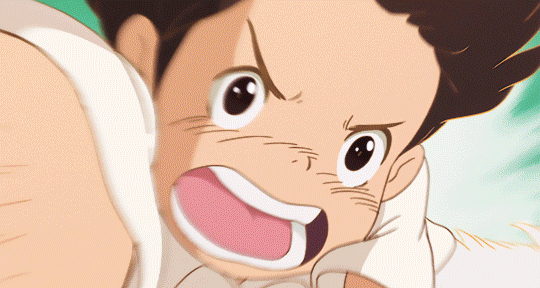
It combines Ishida’s proclivity for elaborate flying shots, child POV and wild camera angles with Arai’s Ghibliesque settings and colours, and the studio’s facility with 3D compositing and non-photorealistic backgrounds; the result is something that sounds really delightful.
2003 - a busy year! - also marked Colorido’s first foray into advertising. Which falls under ‘using their powers for evil’ in my book, but all the same it was Arai’s own debut as a director, and the result was so popular that Colorido was soon fully booked for ad work, including things like… zips. Apparently in Japan it’s worth funding a full anime short film series to advertise zips. I guess people would use them to modify clothes for fashion or something? This is after all the country of Tetsuya Nomura’s design sensibility…
Anyway, if you’ve seen a charming animated ad in recent years, like a certain viral McDonald’s job ad (subbed), it’s probably someone Colorido wot did it. I’m not exactly sure how I feel about this, turning the rather miserable reality of food service into a short story arc about a clumsy anime girl finding fulfilment. Charming, colourful animation certainly doesn’t have to come with a false, sanitised world, with Boy and the World as the perfect counterexample, but under the supervision of ad men? That’s what it’s going to be.
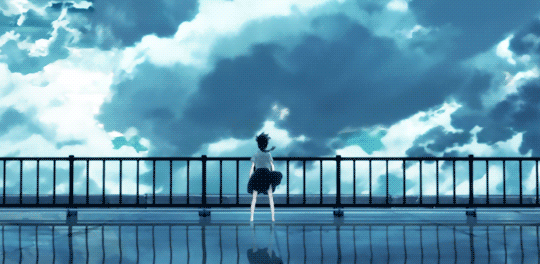
Well, luckily they did a lot of other stuff. In 2015, they joined forces with niotaminA (‘Animation’ written backwards…), another small studio with a very similar ‘good work conditions’ ethos, becoming ‘Twin Engine’. This allowed them to step up production to much larger projects such as Typhoon Noruda, almost half an hour long. Apparently (by kVin’s account) the result was great-as-ever art direction let down by dodgy writing, but it demonstrated the studio’s potential to start working on longer projects…
…which they did a few years later with the feature-length Penguin Highway, naturally directed by Ishida, adapting a novel by Tomihiko Morimi who also wrote the original book of Night is Short, Walk on Girl (whose adaptation is one of my fave Yuasa films) and The Tatami Galaxy (also done by Yuasa but I haven’t seen it yet). So definitely someone popular with some really great directors! kVin describes the decision to make an adaptation rather than an original work a careful one to keep scope in check; the story is a coming-of-age romance story framed by a lady who can summon transforming penguins. kVin writes of it…
The whimsical nature of Morimi’s coming of age story, equal parts straightforward romance and morphing penguins, turned out to be as compatible with Ishida’s own qualities as he’d imagined, even actively encouraging his own quirks. As the director he was able to provide a thoroughly joyful experience, but also to isolate themes like the pathways and make them into a motif, the visual core of a deceivingly smart film. Penguin Highway is a cute movie you’re bound to have fun with on your first watch, and the kind of work that will refuse to leave your mind afterward, no matter its rougher spots.
That’s about where kVin’s article ends, speculating on the new directions the studio might take with the arrival of Ishida’s university friend Tatsurō Kawano, whose own graduation film Loud House is definitely worth a watch. He spent some years following his own path on action shows like Kabaneri of the Iron Fortress.

We can join them again with a second article written a couple years later, in which we learn that Arai left to found a new story called FILMONY (though returning for episode 2 of Twilight Wings), and the studio split into three subteams, among them Team Yamahitsuji consisting of Kawano and some very creative young webgen animators…
It included Natsuki Yamada, a Tatsunoko-trained animator who captures the simple joy of movement so well that she’s already become a leader of sorts for their animation duties. Taiki Konno – I think I can spare you that introduction – was also a member of that initial lineup, alongside wild fledgling director Yuji Shimizu and digital artist Takashi Nakamichi, who bridged the gaps between disciplines as is often the case in modern environments.
One of their first works together was an opening to Boruto, the Naruto sequel and thus one of the highest profile shōnen shows, and indeed they pulled out some impressive background animation and effects shots.

That brings us to their most recent works! They’ve really expanded production (though as ever in anime, in part through outsourcing to other studios like WIT and Toho) to the point of multiple feature films per year, now often released for Netflix. Burn the Witch adapts a standalone Bleach spinoff set in - guess what - the city where I live, London! A Whisker Away has the look of a post-Makoto Shinkai summer movie; it seems to have reviewed well but not received as much attention as their other movies. They’re definitely very much in the idiom (particular drawing style etc.) of modern digital era anime, but I think we can say at their best, they’re at the more inventive and expressive end.
Tonight, then, I’m going to give a cross-section of Colorido’s works (and I guess some of their major figures’ short films made before they joined the studio, such as Hinata no Aoshigure); the main feature will of course be Penguin Highway, and we’ll see if this Burn the Witch business is at all comprehensible if you’ve not watched Bleach. We’ll also check out their latest Pokémon outings. If that sounds like your jam, see you at 7pm UK time (about 90 minutes) at twitch.tv/canmom!
Comments